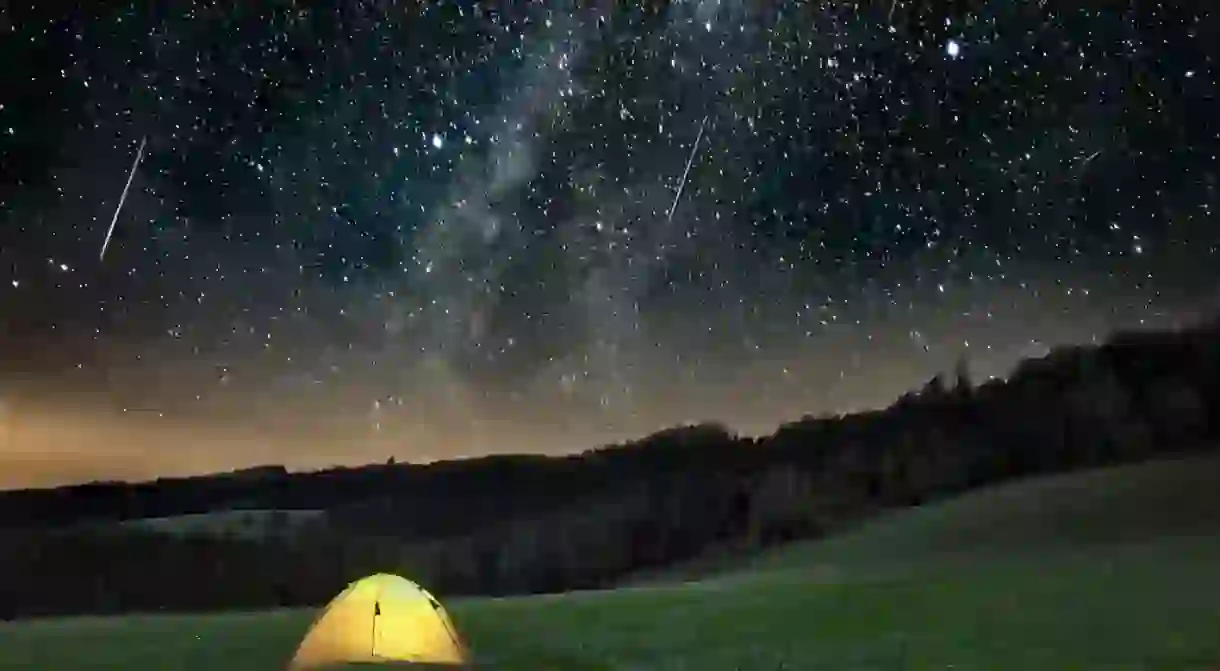Where and When to Watch the Perseid Meteor Shower

One of nature’s best light shows—the Perseid meteor shower—will hit peak performance on August 11–12, 2018.
Considered one of the best meteor showers to watch in the Northern Hemisphere, the Perseids are known for both their volume and vibrancy. As many as 50 to 100 meteors can zip through the sky in an hour, leaving behind long streaks of light and color.
The shower also occurs during the summer months when it’s enjoyable to sit outside and stargaze (or, in this case, meteor-gaze). So grab a blanket, find a spot away from light pollution, and read this guide to learn more about the Perseids and when and where to watch the meteor shower.
What makes the Perseids so great?
The Perseids appear to fall out of the constellation Perseus, which is how the annual meteor shower got its name. But the meteors actually come from the space debris—small comet particles and pieces of broken asteroids—left behind by the Comet Swift-Tuttle as it orbits the sun. Every year, Earth passes through this trail of debris.
As the debris enters Earth’s atmosphere, it burns up, traveling around 132,000 miles per hour and creating the streaks of light that we see in the sky. In addition to having a high volume of meteors, the Perseid meteor shower is also known for its “fireballs,” large meteors with streaks that last longer and are brighter than the average meteor.

When can I watch it?
The Perseids started July 14th, and they will go through August 24th. But the best nights to watch them will be August 11–12 and August 12–13, NASA meteor expert Bill Cooke told Space.com. Because these dates fall shortly after a new moon, this year will be even more ideal for viewing the meteor shower as the light from the moon won’t affect visibility. “The moon is very favorable for the Perseids this year, and that’ll make the Perseids probably the best shower of 2018 for people who want to go out and view it,” Cooke said.
In terms of time, the Perseids are best viewed after midnight and before dawn, with 3 am to 4 am being the ideal time range, according to the American Meteor Society. Sometimes though, it’s possible to see the meteors as early as 10 pm.
https://www.instagram.com/p/6VhPTAoaOG/?utm_source=ig_embed
Where can I watch it?
The Perseids can be seen throughout the Northern Hemisphere, and down to mid-southern latitudes. To best view the meteors as they flash through the night, viewers should find a dark, open sky away from the light pollution of cities. It can take your eyes close to 30 minutes to adjust to the dark, so experts recommend allocating at least an hour of observation time to get the most out of the experience.













